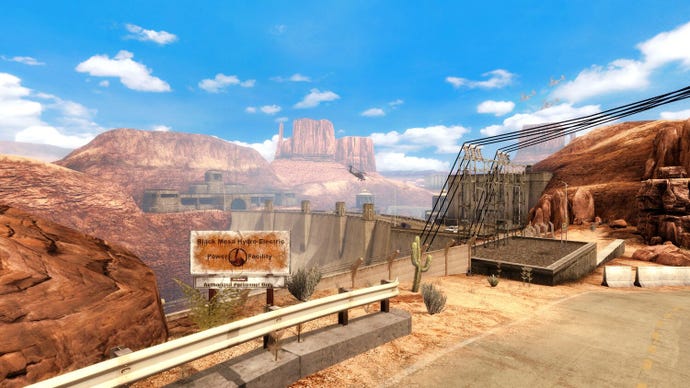For Black Mesa's Developers, the Reality of Launching After 15 Years Is Still Setting In
At PAX East 2020, we caught up with Black Mesa project lead Adam Engels less than a week before the official release of the long in-development Half-Life remake.
This article first appeared on USgamer, a partner publication of VG247. Some content, such as this article, has been migrated to VG247 for posterity after USgamer's closure - but it has not been edited or further vetted by the VG247 team.
Six months ago, if I was told there would be two Half-Life games coming out in March 2020, I probably wouldn't have believed it. Few would have guessed that Valve would be so close to releasing its first Half-Life title in over a decade. As for Crowbar Collective's Black Mesa, the arc from its beginnings as a fan mod to a finished commercial PC release is a lot easier to grasp, but no less impressive.
With Black Mesa set to finally have its 1.0 launch on March 5, members of the Crowbar Collective team came to PAX East 2020 to meet with fans and revel in the release excitement. Many people have been involved with the project or have followed its development for well over a decade. Crowbar Collective not only earned Valve's blessing to sell Black Mesa, but made bold changes that make it more than a prettier version of Half-Life. On top of marking the end of a long journey, tomorrow's release could prove to be a new beginning for the team. Post-release updates aside, Black Mesa's 1.0 will kick off Crowbar Collective's farewell to Half-Life, even as Valve itself plans to revive the series with Half-Life: Alyx in a few weeks.
Black Mesa project lead Adam Engels took some time at PAX to chat with USgamer about Black Mesa, his team's ambitious revamp of Half-Life's confusing Xen chapters, and what's coming next from Crowbar Collective.
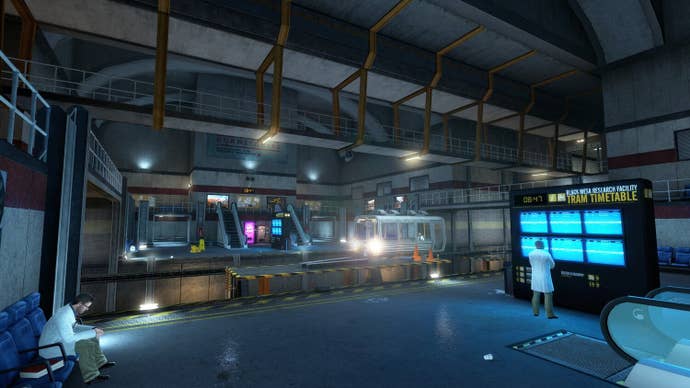
USgamer: For the team, how does it feel to finally be reaching this milestone, especially for members who've been on the project since 2005?
Adam Engels: Or 2004-ish? Two mods merged together to form the team, and that was the start of the project officially. I don't think it's really set in yet that we're hitting 1.0. We're going to continue to support the game, patch bugs, polish up some certain things, but it hasn't quite set in that we're done-done. That, and we have some work to do, too. We're testing builds, we're here at PAX promoting the thing.
I know our fans seem to be really happy that 1.0 is coming out. A lot of people have been waiting for that; they say "Your game looks good, I bought it, but I'm just waiting for the 1.0." Or even the people who just put it on their wish list, and once the 1.0 hits they'll buy it, which we completely understand. So, we're excited to be there.
Let's talk about that post-release support. I think one thing that's underappreciated about Black Mesa is that it has a remake of multiplayer, too. You've got Crossfire and other classic maps. For a 2020 audience, what does post-release support look like in more ways than just fixing bugs and tweaking single player?
If the game goes completely gangbusters, we'd love to keep supporting it and keep building new features. We don't want to promise anything and disappoint people, but we would love to do more. There have been a lot of people talking to us about other projects, like Sven Co-op, and then, just building out more maps. Maybe we could make some Xen levels in multiplayer where we can hop around in low gravity or use the long jump. We're looking forward to evaluating that.
Black Mesa started as a mod for Half-Life 2, which had a vibrant modding scene, and I know there have been tons of fan projects that want to do the old Half-Life expansions in the style of Black Mesa. Are you in close contact with mod teams? Is there a lot of information sharing going on?
Yep. I'm in a couple of the Episode 3 Discords, chatting with those guys. The expansion teams, I haven't talked with them too much, and I really should because I'd love to see what they're up to. But we have a Steam Workshop on Black Mesa and people have been contributing to that.
It's something we want to focus on as part of the post-release plan, to make it so that people can add to our project if they want to, and then maybe utilize our assets we've already built-out if they want to do a Xen adventure, or something like that.
Because technology is so advanced these days, it's harder and harder to build these projects, and I don't want to see the mod scene go away because of how technical it is. Hopefully Half-Life: Alyx can help with that, hopefully we can help with that. We definitely want to keep that alive for other people.
A lot of people now recommend Black Mesa as the entry into the Half-Life series. Were there any special considerations you made to ensure you're both honoring the original experience and presenting your own vision, while not throwing people into the less-forgiving 1998 end of the pool if they're not ready for it?
Actually, that's a big part of our 1.0: we went through and reevaluated the combat spaces to to draw the player in, make sure they have cover to move to, and so that they can circle around the combat space. Player guidance was a big thing we focused on so that people don't get bogged down.
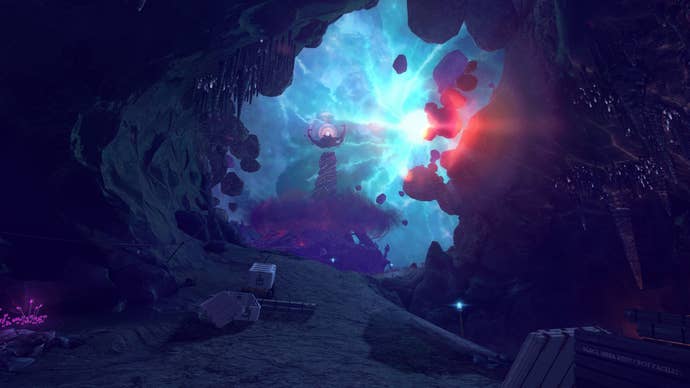
We expanded Xen from about an hour to about four hours. We want people to get to that, so we don't want them getting bogged down in the earlier parts of the game anywhere. We really refined it to make sure it was clear, without dumbing it down. We didn't want to make it super simple or anything like that.
We also changed the difficulty settings from "easy, medium, hard" to "normal, Black Mesa, hard," just so that if people were having trouble—because it is an old-school shooter and a little bit more difficult—we didn't want to be judgy. That's easy, because if you're having fun with the game, it doesn't matter.
Have you made any other accessibility features or control changes for Black Mesa that had to be built into Source?
That's another post-release thing that we're really gonna be focusing on. We've completely rebuilt our UI, and it doesn't have controller support yet, but that's the reason we rebuilt it. We think it looks good too, but the main thing was so that if you're on a controller, you can select things in the menu. There are still a couple of things like starting servers and stuff you'll need a keyboard for, but we eventually want to have it where you can play the whole game on a controller, reintroduce auto-aim, and just have those quality of life things for anybody. Maybe somebody has a disability and they can't use a keyboard and mouse, so, we want to try and hit as much of our audience as we can.
Xen was, evidently, a tough nut to crack. The consensus is that those levels in the original Half-Life, apart from a few highlights, are not great. In Black Mesa, you really invest in telling the Xen story beats that were retroactively cleared up in Half-Life 2. How did you arrive at your Xen chapters?
It was sort of chicken-and-egg when we first started. We didn't have the levels so we couldn't put the art in, and we didn't have the art so we couldn't make the levels. That was the nut to crack, as you said, to really get development going. Once we did that, we wanted to expand on the story of what the scientists were doing on Xen, because in Half-Life there's basically a couple of HEV suits lying around. We built more environmental storytelling for how they got these aliens back and how they were studying them.
For Gonarch, we wanted more of a chase sequence. We had lots of ideas about how we could not necessarily make her a villain, but more this creature that just exists. Some of those we had to compromise on, but we're really happy with how that turned out, with the hunter becoming the hunted.
With Interloper, we wanted to tell the story of the Vortigaunts and to really demonstrate they're under mind control. I didn't realize when I played through Xen [in Half-Life] that the Vortigaunts were neutral, and they wouldn't attack you. I mean, you were playing a game for eight hours or so, just blowing them away, and now suddenly they're neutral. I think a lot of people picked up on that in Black Mesa and a lot of people wanted to protect them, which was a huge goal of ours.
For Nihilanth, we really wanted to start from scratch and just make the best boss battle we could. We wanted it to be an experience: not just challenging, but to really show off what we could do artistically with the whole set piece.
What was it like to hear that Half-Life: Alyx was coming and then to realize you'd be hitting 1.0 right before that?
Truthfully, we wanted to have our 1.0 out a little bit earlier. We didn't want to necessarily compete with Alyx; we know it's going to take a lot of attention. But I think it actually worked out pretty well, because it's sort of a Half-Life month now. I don't have a VR headset yet, but this might be the thing that entices me to dive into that. And I keep telling people, if someone is going to figure out the problems in VR, it's gonna be Valve.
Do you think that the Half-Life: Alyx announcement has lifted up Black Mesa?
When they announced it we did see a rise in people noticing us. So it's great for us—free marketing, basically. We're super stoked for the game and stoked that Half-Life's having a little revival here.
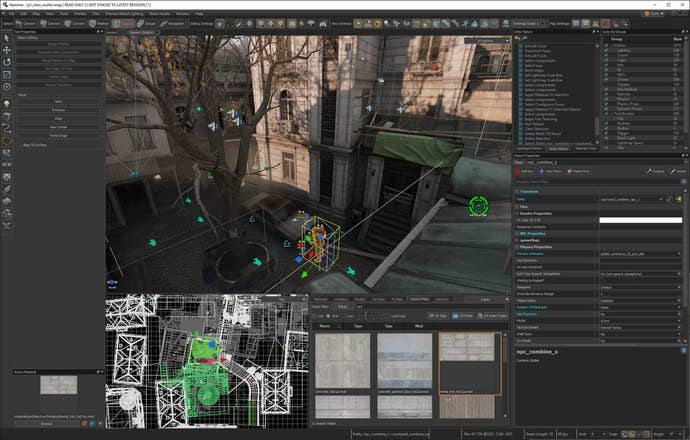
We do know that Valve's going to release the new version of Hammer with Half-Life: Alyx, which means there'll be some mod support—at least for new maps—and, hopefully, some backward compatibility. When that comes out, are you going to see if Black Mesa's BSP files can move over and experiment with your maps in Half-Life: Alyx's VR?
We're absolutely going to dabble with those tools. And I'm really curious as to how they built it. You mentioned BSP; are they even using BSP anymore in this newer engine, or is it all mesh-based?
The game looks fantastic. Reverse engineering their stuff and seeing how other tricks of the trade are done—we're really interested in that. We'll definitely be dabbling with Source 2.
Both as a fan and as a developer, what are you most excited to see in Half-Life: Alyx itself?
If you've got 40 minutes to burn sometime, I did a whole breakdown of their reveal trailer. I can't remember off the top of my head, but there was a ton of stuff I was mentioning like "I wonder if they're gonna do this?" Or in the [Half-Life 2] concepts there are the Combine Cleaners. They had flamethrowers and were cut—there's indications I saw that maybe they're in Half-Life: Alyx, so hopefully that comes true. There are just so many little things that in that trailer, and most of my guesses are probably wrong, but it's really cool to look through and see what they might be up to.
The main developer thing I'm interested in is how they've built the VR spaces, because it's really hard to navigate in VR. It will get you motion sick. Obviously, you're confined to your room, so you can't move too far even if you have a larger space. I'm guessing they made their combat spaces smaller and more intricate so that you can see it in your headset and get up close to all these details, and that will keep the frame rate high because you're not rendering this giant space. That's what I'm really interested to see.
It would be a lot harder in VR to stomach, say, Black Mesa's Surface Tension where you're peering over the side of a giant hydroelectric dam.
Or the Xen levels too, where you have a long jump module strapped to your back and you're doing these huge jumps, which would be absolutely insane in VR. Really cool, probably, for the first time, and then motion sickness after that.
What's next for Crowbar Collective? After the long and winding road with Black Mesa becoming a commercial product and finally getting released, do you want to make something new in the same vein as Half-Life?
We've got a couple of ideas, a couple of projects kicking around. One of them's in pre-production. They'll most likely stay in the first-person shooter genre, as it's sort of our bread and butter. It's what we know, and we learned a lot of hard lessons on Xen and the project overall that we can pull forward.
We're really looking forward to using the newer engines. The newer technology has a lot of sweet features that we think are really going to speed up production, so we can't wait to get our hands on that.
You're thinking of moving away from Source?
Yes.
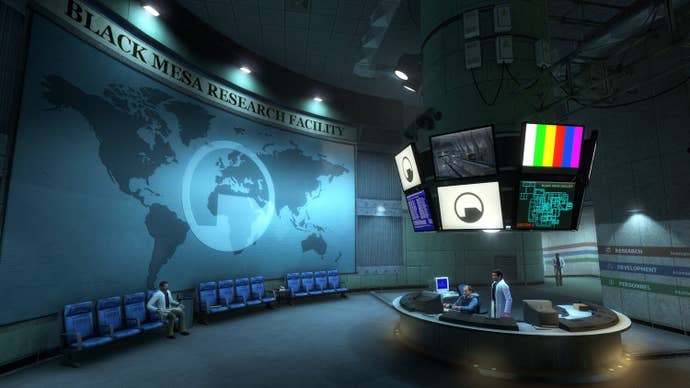
Adam, you've been living and breathing this project for years. How do you feel about stepping away from Half-Life even as it looks to be resurgent within Valve?
It's gonna be a bit of a change. You know, people jokingly say to us, "oh, you guys can do Half-Life 3 now." I don't know if I would want to. The expectations are so high and it's so near and dear to people that pretty much no matter what anybody did, Valve or any development studio, it probably wouldn't live up to what's been built up.
I'm actually really glad about the spin-off with Alyx. It's a great middle ground for the pitfalls I was just talking about. But as for us walking away from Half-Life, for me it's been 14 years on the project, so I don't think it's ever really going to leave me. It will, thankfully, always be out there on Steam. I'm not too worried about going away or feeling too nostalgic about it yet, but maybe in a couple years.
This interview has been lightly edited for length and clarity.